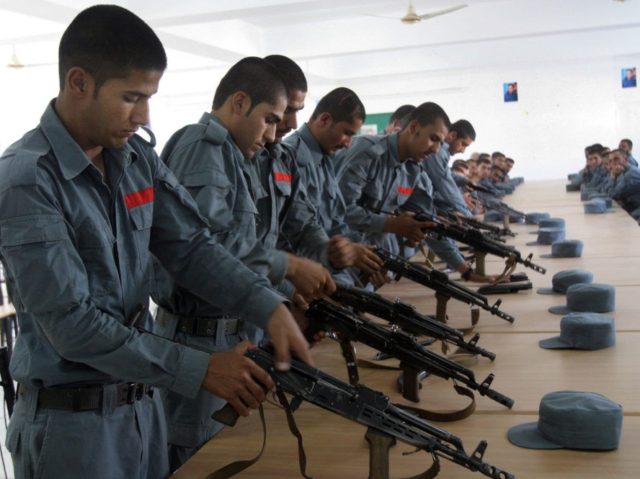WASHINGTON, D.C. — Nearly two-thirds, or about 200,000, of the number of U.S.-funded Afghan National Defense and Security Forces (ANDSF) needed to keep Afghanistan safe have been deemed nonexistent “ghost” service members who are supposed to be backing American troops on the battlefield, revealed a letter sent to the Pentagon by a watchdog agency.
The ANDSF includes police and army units. Fifteen years to the day since the war in Afghanistan started, the U.S. Special Inspector General for Afghanistan Reconstruction (SIGAR) points out that the limited number of American troops in Afghanistan are being sent into battle with Afghan troops, who are supposed to be in the lead of security operations, but may prove to not exist, severely limiting the number of actual troops on the ground.
The Pentagon refused to comment on whether the Obama administration is concerned about “ghost” Afghan troops receiving U.S. taxpayer funds, jeopardizing U.S. gains, and placing American military troops at risk. It would not say whether any American troops have been killed our wounded as a result of going into battle with nonexistent backing.
“Persistent reports indicating discrepancies between the assigned force strength of the ANDSF and the actual number of personnel serving raise questions regarding whether the U.S. government is taking adequate steps to prevent taxpayer funds from being spent on so-called ‘ghost’ soldiers,” wrote the watchdog agency.
“Neither the United States nor our Afghan allies truly know how many Afghan soldiers and police are available for duty, or, by extension, the true nature of their operational capability,” SIGAR told lawmakers in April 2015.
Inaccurate and unreliable data on Afghan security personnel may place America’s security and billions of U.S. taxpayer funds at risk, pointed out SIGAR in April 2015, noting that the United States has spent nearly $70 billion to recruit, train, equip, house, feed, supply, and pay the salaries of the ANDSF, including those of “hollow” Afghan brigades that do not really exist.
In an August 5 letter addressed to U.S. Secretary of Defense Ash Carter and made public on Friday, the 15th year anniversary of the Afghanistan war, the U.S. Inspector General for Afghanistan Reconstruction (SIGAR), an oversight agency appointed by Congress, noted:
U.S. Forces-Afghanistan reported that in the quarter ending June 2016 ‘ANDSF assigned force strength was 319,595 (not including civilians).’
However, the Associated Press [AP] previously reported an Afghan official as indicating that ‘the best internal estimate put the number around 120,000, less than a third of what is needed to secure the country.”
That means that about 200,000 (319,565-120,000), or about two-thirds, of the total number of Afghan security forces are not accounted for and considered “ghost” troops. The Pentagon would neither confirm nor deny the 200,000 figure.
President Barack Obama has drastically reduced the U.S. military footprint in Afghanistan, driving American troops to intensify their reliance on their Afghan counterparts.
SIGAR has been sounding the alarm about the Obama administration not knowing how many ANDSF troops “actually exist.”
At the end of April 2016, the watchdog group reported:
For years, the authorized [end] strength of the ANDSF has been 352,000 soldiers and police. The ANDSF’s reported actual strength has at times approached that goal, but never reached it. More troubling is SIGAR’s assessment that neither the United States nor its Afghan allies know how many Afghan soldiers and police actually exist, how many are in fact available for duty, or, by extension, the true nature of their operational capabilities.
SIGAR has blamed the lack of accurate and reliable personnel information on the Obama administration transferring oversight of the ANDSF to the Afghan government, which is plagued with corruption.
The U.S. continues to rely on Afghan reporting on unit strengths, a concern for SIGAR because the rolls may contain thousands of ‘ghost’ personnel whose non-existence distorts realistic assessments of Afghan capabilities.
In the letter, the watchdog agency noted:
DOD [U.S. Department of Defense] is working to automate and centralize systems across the ANDSF, as well as to develop biometric procedures to better track soldiers and police…
In addition, DOD continues to place financial controls on U.S. funds provided to the ANDSF through a series of financial commitment letters with the Ministry of Defense (MOD) and the Ministry of Interior (MOI). These letters establish expectations for the responsible management of ANDSF funds and conditions under which funding can be withheld if these expectations are not met.

COMMENTS
Please let us know if you're having issues with commenting.